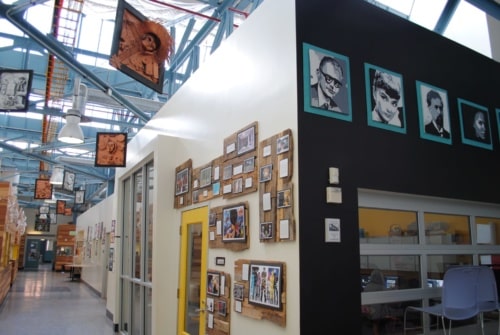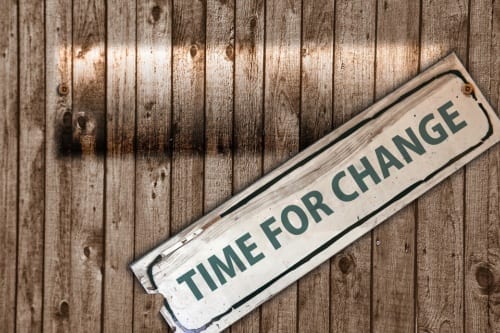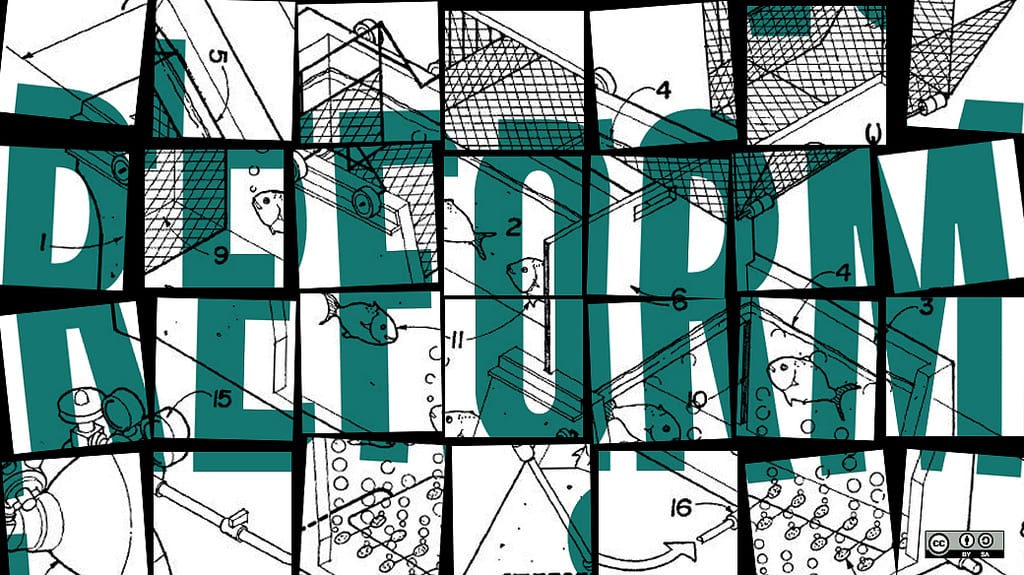The slow erosion of American education has become a mudslide
By David Greene
 This week I had the pleasure of being interviewed on a local White Plains Cable Access Show called “Westchester Roundup.” The interview went well but that is less important than what happened before the interview actually started.
This week I had the pleasure of being interviewed on a local White Plains Cable Access Show called “Westchester Roundup.” The interview went well but that is less important than what happened before the interview actually started.
The Host, Bob Johnson, a member of the Port Chester School Board, and I met at a local #resist meeting a few weeks ago. I had approached him because he was the only other person there who spoke about education as an issue. When I found out who he was I asked him whether or not he had an experiential learning (internship) program for his seniors. He said no, but was interested. We exchanged contact info and arranged to meet. Then he invited me to be on his show.
Prior to the interview, I discovered I knew one of the producers there, Rita Santos. She was a former student at Woodlands HS and had participated in the school’s WISE Program, a semester long senior program where students worked on personal projects or internships. Hers had been to learn about video by making a video about the program via 1990 video techniques.
Where did she learn that? Right where she is now, working and supervising another former Woodlands graduate who did the same thing as a senior in high school. Then she pulled up and gave me copies of the digitalized versions of her raw and finished work that year, 27 years ago. How cool. How interesting, based on what was to be the basis of the interview to follow.
 In our talks beforehand, Mr. Johnson suggested I watch a video about Hi Tech High. I was skeptical about a network of charter schools with that name and a CEO instead of a principal. When I saw the Pearson Foundation sponsored the video, I wretched, but watched anyway.
In our talks beforehand, Mr. Johnson suggested I watch a video about Hi Tech High. I was skeptical about a network of charter schools with that name and a CEO instead of a principal. When I saw the Pearson Foundation sponsored the video, I wretched, but watched anyway.
Then I heard Larry Rosenstock narrate and saw the kids working on projects. I was floored. He spoke my language.
He expanded on the history of ed reform in this country. “Every time we get in trouble we invest in science tech, engineering and math. The down side is this is detrimental to the liberal arts.” Instead, his misnamed school actually loads up the curriculum with art, design and conceptual work because engineering and art are integral to all subjects. Interdisciplinary teaching is integral to student growth. He calls it a “place where you find out who you are.”
That, my friends, is what all high schools are supposed to be, not factories to manufacture test takers or robotic learners seeking “college and career.” High school should have a social justice agenda that doesn’t prepare kids just for that cliché, but rather for life.
 His school was all project-based learning. It was heterogeneous with no segregation by race or economic status. The school honored the Brown vs. Topeka decision and had “reversed the negative peer effect of segregation.” It focused on original student work where they had to apply content to their projects. “This is what adults do.” In addition, all student work was exhibited so all students and teachers could learn for all successes, and just as importantly, failures.
His school was all project-based learning. It was heterogeneous with no segregation by race or economic status. The school honored the Brown vs. Topeka decision and had “reversed the negative peer effect of segregation.” It focused on original student work where they had to apply content to their projects. “This is what adults do.” In addition, all student work was exhibited so all students and teachers could learn for all successes, and just as importantly, failures.
The disciplinary code is simple. Treat kids with respect. Treat them as adults. Then they will behave as adults. I had said and practiced that since my earliest years teaching. I wish I had known then the quote Rosenstock took from Voltaire to explain this, “suspicion invites treachery.” No School-to-prison pipeline here. In America these days that is simply not the case. Students and teachers alike are neither trusted nor respected.
Both groups are over-monitored, with evaluations tied to test results. Teachers have lost their creativity, fearful of firing. With teachers we need to be “evocative”. We need to be midwives and learn how they learned in HS, what were their most memorable experiences. “It was a project.” “I had a mentor.” “It involved community.” “There was risk of failure and recognition of success.” “There was a public exhibition…”
“This didn’t come from a state legislature or district office… we asked how you learned best and you are describing what we do here. What is stopping you from doing this? What do you love from outside of school? Bring it in. Integrate it. If we can connect what you really love to do with the subject you teach you will be more passionate.”
I learned how to teach when I was in second grade. I have often written and spoken about my second grade teacher, Rita Stafford, who taught us astronomy by allowing us to build a solar system that hung on our classroom ceiling. We learned about civil rights in 1956-7 not only by reading newspapers and learning about Birmingham and Little Rock, but by writing letters to President Eisenhower as concerned citizens.
We learned to love learning because of her passion and creativity, so often lost in today’s “Reform World.” Learning is best done “in the company of a passionate adult who is rigorously perusing inquiry in her subject matter and is inviting students along as peers in that discourse.”
“We know a good teacher by the sophistication of that teacher’s kid’s work. If a teacher’s work is worth doing, has lasting value… and learning that is worth learning… he or she is a good teacher.” Ms. Stafford was. So, I hope, was I because of what I did following those models.
 She, Mr. Rosenstock and I all want kids behaving like scientists, artists, and historians: not just studying the content, and doing only restrictive work that allows for success on multiple choice tests. What better way is there than through actually doing the work rather than learning about it? What better way is there than project learning or learning through internship programs, especially in high school? After all, “what is adolescence but trying on new roles and sampling identities? We must just give them the chance.”
She, Mr. Rosenstock and I all want kids behaving like scientists, artists, and historians: not just studying the content, and doing only restrictive work that allows for success on multiple choice tests. What better way is there than through actually doing the work rather than learning about it? What better way is there than project learning or learning through internship programs, especially in high school? After all, “what is adolescence but trying on new roles and sampling identities? We must just give them the chance.”
But alas, our Ed reform history has been abysmal. From 1983’s Nation at Risk, to 2001’s No Child Left Behind, to 2009’s Race to The Top and Common Core, and now who knows what from anti public education public education secretary DeVos, we have eroded public education so much it has already started a free fall of students and teachers lost in the mud of “reform.”
I still believe we can recover. Join me in the fight, as Ms. Stafford did. As Mr. Rosenstock has. Rita Santos and countless others are the proof of the pudding.
Further Reading
- US News – The Capital of Education Reform
- NRT Today – Making a point on education reform
- The Huffington Post – There Is No Silver Bullet For Education Reform







